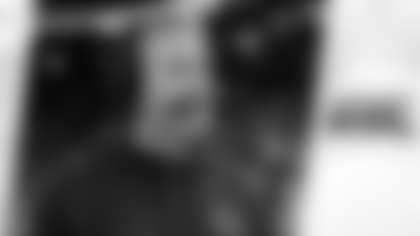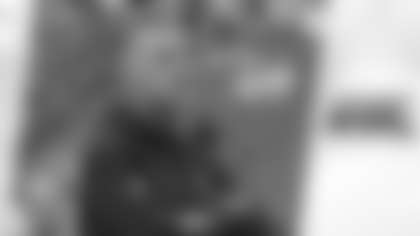After watching tape of Sunday's 49-29 loss to the Cowboys, Bears coach Matt Eberflus discussed three things that stood out to him in the game:
(1) Eberflus identified the continued success of the run game as the most positive aspect of the Bears' performance in Dallas.
The Bears rushed for 240 yards and two touchdowns on 43 carries, topping 200 yards on the ground for the third straight game for the first time since 1968. Khalil Herbert led the way with 99 yards on 16 attempts, quarterback Justin Fields ran for 60 yards on eight carries and David Montgomery added 53 yards on 15 attempts.
"I really believe that's the Chicago Bear way, us having the ability to run the football like that," Eberflus said.
The Bears lead the NFL in rushing, averaging 188.4 yards per game. Eberflus believes their success on the ground stems from a commitment from coaches and all 11 players on the field.
"We have a good 1-2 punch with the running backs, and that third dimension with the quarterback certainly helps out," Eberflus said. "[But] you don't get that done without guys straining to get the second-level blocks, the offensive line moving the front line to begin with and then really the perimeter blocking by the tight ends and receivers.
"It's a commitment by those guys, and they've done a really good job of buying into that. Some of those guys aren't very big. Let's be honest, [Darnell] Mooney is not that big of a guy, [Dante] Pettis is not that big of a guy, and they're in there cracking on linebackers and defensive linemen. Man, that takes some guts to do that. The guys are gritty and they're getting in there and the runners are running with their pads down, so it's really creating that for us."
(2) While the Bears have been able to run the ball well all season, they continued to struggle defending the run Sunday in Dallas.
Despite starting running back Ezekiel Elliott sitting out with a knee injury, the Cowboys rushed for 200 yards and four touchdowns on 29 carries, an average of 6.9 yards per attempt. Running back Tony Pollard ran for 131 yards and three TDs on 14 carries.
"We've got to improve the run defense," Eberflus said of a unit that ranks 31st in the NFL, yielding an average of 156.0 yards per game.
Pollard had TD runs of 18, 7 and 54 yards. His 54-yarder gave the Cowboys a comfortable 49-29 lead early in the fourth quarter after the Bears had closed to within 42-29 on Fields' 10-yard TD pass to Cole Kmet.
The Bears defense struggled mightily on third down, permitting the Cowboys to convert 9-of-11 opportunities (81.8 percent), and in the red zone, yielding touchdowns on 4-of-4 Dallas possessions inside-the-20.
"We've got to improve situational football, third down and red zone," Eberflus said. "But it's about growing. It's about growing and getting better with each position and then growing into that HITS principle. It starts obviously with the hustle and then the intensity to play your run gaps has to improve. That, to me, is what it really is, and that's fundamentals and technique of the coach and the players. We have to improve on that.
"We're taking the ball away pretty good, but situationally we've got to improve some. There's good and bad in there; we've just got to make sure we keep improving the bad."
(3) The Bears had opportunities to complete some deep passes but failed to execute.
On their first play from scrimmage, receiver Equanimeous St. Brown beat cornerback Anthony Brown deep down the field. But Fields underthrew the long pass and it fell incomplete.
"The first play was something we thought we could take advantage of," Eberflus said. "We've been running that protection and running a couple different routes off of that. Then we really thought we could do a good job of running by the guys, and we did that on both sides. We've got to let that air out. 'J' (Fields) knows that and just a little underthrown on that one."
Later in the first half, Fields threw an accurate deep ball to Velus Jones Jr., but the rookie failed to hang onto the catchable pass as he fell to the ground with a defender on his back.
"He worked himself open all the way down the field and that ball was on the money," Eberflus said. "So [Fields] did a great job there. Later in the game, he also threw one on the money to St. Brown in the end zone, where we got them to jump offsides. That was a wonderful throw. I've been saying it all along: he's a wonderful deep ball thrower. He can put it on a dime, drop it in the bucket, whatever metaphor you want to use. He certainly had a couple of good ones there."
Despite not connecting on his longest throws, Fields established career highs with a 73.9 completion percentage (17 of 23) and a 120.0 passer rating, throwing for 151 yards and two TDs with no interceptions.















